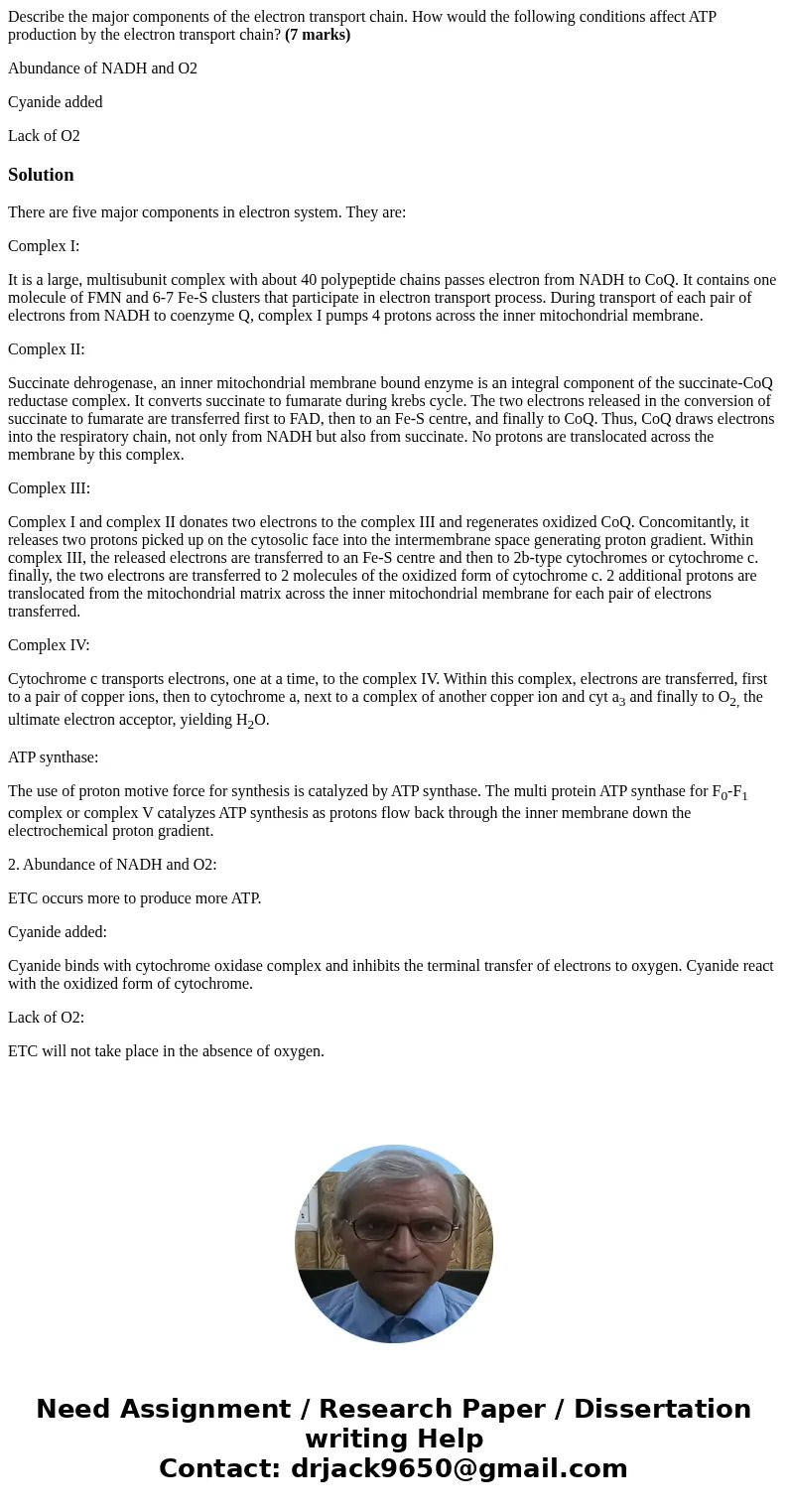Describe the major components of the electron transport chai
Describe the major components of the electron transport chain. How would the following conditions affect ATP production by the electron transport chain? (7 marks)
Abundance of NADH and O2
Cyanide added
Lack of O2
Solution
There are five major components in electron system. They are:
Complex I:
It is a large, multisubunit complex with about 40 polypeptide chains passes electron from NADH to CoQ. It contains one molecule of FMN and 6-7 Fe-S clusters that participate in electron transport process. During transport of each pair of electrons from NADH to coenzyme Q, complex I pumps 4 protons across the inner mitochondrial membrane.
Complex II:
Succinate dehrogenase, an inner mitochondrial membrane bound enzyme is an integral component of the succinate-CoQ reductase complex. It converts succinate to fumarate during krebs cycle. The two electrons released in the conversion of succinate to fumarate are transferred first to FAD, then to an Fe-S centre, and finally to CoQ. Thus, CoQ draws electrons into the respiratory chain, not only from NADH but also from succinate. No protons are translocated across the membrane by this complex.
Complex III:
Complex I and complex II donates two electrons to the complex III and regenerates oxidized CoQ. Concomitantly, it releases two protons picked up on the cytosolic face into the intermembrane space generating proton gradient. Within complex III, the released electrons are transferred to an Fe-S centre and then to 2b-type cytochromes or cytochrome c. finally, the two electrons are transferred to 2 molecules of the oxidized form of cytochrome c. 2 additional protons are translocated from the mitochondrial matrix across the inner mitochondrial membrane for each pair of electrons transferred.
Complex IV:
Cytochrome c transports electrons, one at a time, to the complex IV. Within this complex, electrons are transferred, first to a pair of copper ions, then to cytochrome a, next to a complex of another copper ion and cyt a3 and finally to O2, the ultimate electron acceptor, yielding H2O.
ATP synthase:
The use of proton motive force for synthesis is catalyzed by ATP synthase. The multi protein ATP synthase for F0-F1 complex or complex V catalyzes ATP synthesis as protons flow back through the inner membrane down the electrochemical proton gradient.
2. Abundance of NADH and O2:
ETC occurs more to produce more ATP.
Cyanide added:
Cyanide binds with cytochrome oxidase complex and inhibits the terminal transfer of electrons to oxygen. Cyanide react with the oxidized form of cytochrome.
Lack of O2:
ETC will not take place in the absence of oxygen.

 Homework Sourse
Homework Sourse